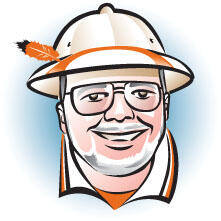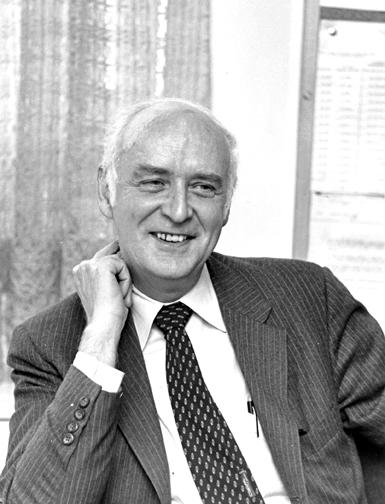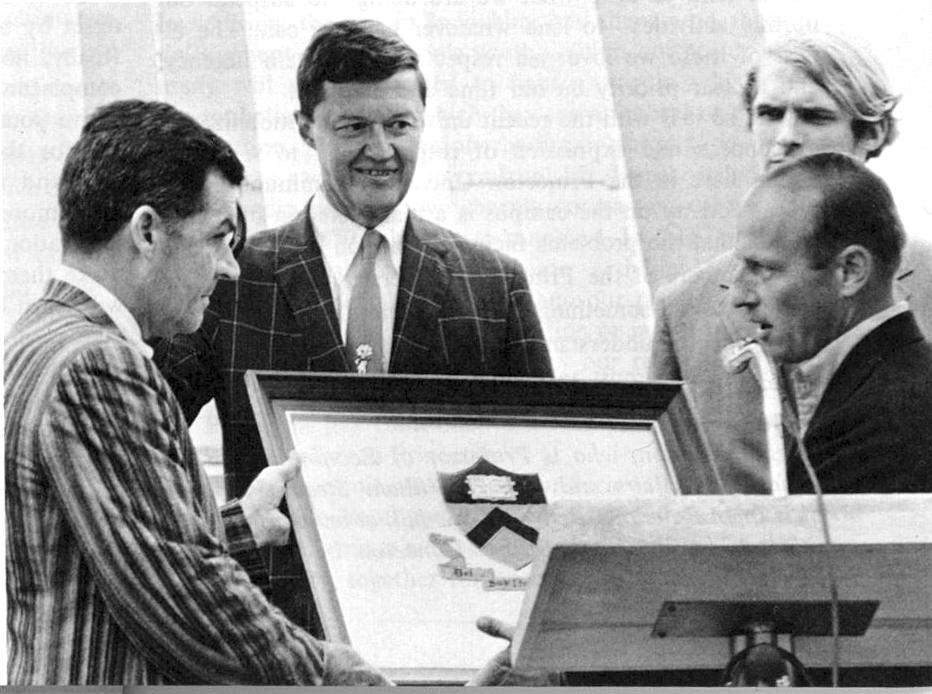The world really was different in 1969-70
(First of three columns on the fundamental transformations at Princeton 40 years ago)
You've been with the professors and they've all liked your looks.
With great lawyers you have discussed lepers and crooks.
You've been through all of F. Scott Fitzgerald's books;
You're very well read it's well known,
Because something is happening here but you don't know what it is,
Do you, Mister Jones?
-- Bob Dylan, “Ballad of a Thin Man,” 1965
Stanley Kelley Jr., our wonderful emeritus professor of politics, recently died. This brings back intense memories and feelings, and my usual problem recurs. I have a very difficult time to this day trying to explain that my undergraduate years were different from those of other classes.
Everybody’s undergraduate years are different; that’s the whole point. Duh. But while the great (and eventually unique) Class of 1970 walked into Princeton in a welter of chinos and loafers and manly eating clubs, we left in an aromatic haze with torn jeans and tie-dyed T-shirts and female clubmates. We entered the Princeton of Hobey Baker and the Long [drag] Kickline and in loco parentis, and left the Princeton of Brian Taylor and the CPUC and women’s studies and the Movement for a New Congress. I’ve always had an easy time believing in wormholes, because it always seemed to me Princeton took a gleeful skip from one side of the galaxy to the other while I was down in the basement of Holder at WPRB listening to the brand-new Beatles (“A Day in the Life” from Sergeant Pepper, still the best rock song ever written), Stones, and Who albums.
Astonishingly, a huge portion of this space-time transformation took place in a 14-month period from 1969-70, barely a single leaf-raking on the historic arc of the front campus. The Daily Princetonian of the time became as close to the stereotypical “Extra! Extra! Murder in the Library!!” B-movie police tabloids as it was to The New York Times, and students and faculty alike found satire to be futile since it couldn’t keep up with reality.
The horrendous national mess of 1968, featuring the Tet Offensive, Lyndon Johnson’s implosion, Martin Luther King Jr. and Bobby Kennedy’s assassinations, extensive urban riots, the Chicago Democratic convention, and the resurrection of Richard Nixon and perpetuation of the Vietnam War, moved onto the campuses in 1969 just as questions of mission, rights, diversity, governance, and leadership all coalesced in a college generation that was beginning to suspect that Woodstock nation was saner than any other on earth, and had no idea what to do about it.
For a little context, here are a few news items from the world at large between April 1969 and April 1970. Harvard president Nathan Pusey brought in the Cambridge police to oust demonstrators from his administration building; 45 people were injured, and his credibility was destroyed. The Weathermen took over the national SDS structure, then sponsored the Days of Rage riots; some of them blew themselves up by mistake in a New York town house. The Stonewall riots erupted, marking the beginning of the gay rights movement. Man landed and walked on the moon for the first time. The misnamed Woodstock Festival took place (Dylan decided not to perform, although his ex-backing group, The Band, did). President Nixon coined and slowly began “Vietnamization,” removing some American troops from Vietnam; 400,000 people demonstrated in Washington against the war while he watched football on TV. Spiro Agnew, possibly the most venal individual ever elected to American national office, began his divisive criticisms of the press and the left. The My Lai massacre was uncovered. The Chicago 7 went on trial, and five were imprisoned despite being acquitted of conspiracy. The first military draft lottery since World War II was held. The Beatles broke up, and Diana Ross left the Supremes. The first Earth Day took place.
Meanwhile, Fitzgerald’s Jazz Age Princeton had been undermined steadily by the Depression and World War II and Martin Luther King, but it took president Bob Goheen ’40 *48, Harold Helm ’20, Stanley Kelley, and (of all unlikely people) Bob Dylan to turn it into the Princeton we know today. The trustees started the ball rolling in April of 1969. Literally faced with two stacks of envelopes addressed to female applicants – one saying “we’re not coed” and the other “you’re a Princetonian!” – they bowed to Helm’s coeducation committee report and admitted women undergrads, effective in September. This would have been the single defining event of most decades; in 1969 it was just a momentary appetizer.
The next month saw the election of Robert Cass ’68 and senior Brent Henry ’69 as University trustees, the first young alumni trustees under a hastily assembled policy that outflanked a revolt against a rule (thus rescinded) requiring alumni to be 10 years out before eligibility. Oh, and Henry was also black, another first in the University’s 223 years.
Next up to the plate in May was Stan Kelley. While his committee on University governance (also created by the trustees, under pressure for a voice from multiple University groups) was continuing its work, the group’s first creation – the unprecedented Council of the Princeton University Community (CPUC) – was presented, approved, and slated to take effect as soon as most of its diverse members were elected by student, faculty, administration, staff, and alumni constituencies. The CPUC continues to this day as the University's central, broadbased deliberative body.
In August, the single-wing offense was dropped by new football coach Jake McCandless ’51. A combination trademark and talisman of the program for 24 years under Charlie Caldwell ’25 and just-retired Dick Colman, wherein it went 145-63-3 against some of the best teams in the country with a Heisman and a couple Lambert Trophies, some football alums felt as if they’d lost a child. The first game in the new T-formation exposed the unreadiness of the offensive change on national television, as Princeton lost the 100th anniversary game of college football to Rutgers, 29-0. Vindicated in the season’s final game with a 35-7 thrashing of a powerful undefeated Dartmouth team for the Ivy co-championship, the change proved bittersweet: Princeton then went 20 years (and four coaches) before it saw another title.
Whig Hall burnt to the walls; most Whig-Clio records were saved, but the architecture of the rebuilding was a sore point for decades afterward.
On Nov. 19, Pete Conrad ’53 walked on the surface of the moon. He literally carried the Princeton flag with him.
Strangely, we on campus were closer to the event horizon of the wormhole than he was.
“No reason to get excited,” the thief, he kindly spoke,
“There are many here among us who feel that life is but a joke.
But you and I, we’ve been through that, and this is not our fate,
So let us not talk falsely now, the hour is getting late.”
-- Bob Dylan, “All Along the Watchtower,” 1967
----------------
Coming June 2 in Rally ’Round the Cannon: Vietnam seeps inexorably onto the campus and even the football field, and Walter Hickel (who?) gets caught in the backdraft















No responses yet